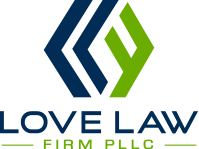
You’ve encountered the situation as a consumer, no doubt. You go to pay for your item and you see a small sign taped to the cash register, “3% surcharge for all credit cards.” You either switch to cash or you go ahead and pay the extra fee that is tacked on.
If you operate a small business in the state of New York, you may be wondering if you can do the same thing. Section 518 of the General Business Law, which, in no uncertain terms, makes it illegal for merchants to charge extra if a customer wants to use a credit card. New York enacted section 518 in 1984, and although it was modeled on a federal law, it was just vague enough to pose problems, especially when it came to interpreting certain terms it contained. However, the New York Court of Appeals has issued a ruling that provides some guidance on the issue.
Credit Card Surcharges Permissible Under Certain Circumstances
The short answer is that merchants must comply with certain requirements if they charge different prices based on the customer's payment method.
Two of the critical things that a merchant must do are (1) state the policy or price clearly and in advance, and (2) not force the consumer to handle the math involved to determine the price of an item if they pay with a credit card. However, debit card users don't have as many protections as credit card users as they are accessing their bank account directly, and not borrowing money from a credit card company.
.png)
Perhaps the simplest way to explain the requirements and differences is to refer to the following chart for various scenarios.
Examples and Scenarios for Compliance
.png)
.png)
.png)
|
Examples and Scenarios |
Debit Cards |
Credit Cards |
||||||||||||
|
Percentage Discount: A store |
Compliant |
Compliant |
||||||||||||
|
Cash Discount: A store |
Compliant |
Compliant |
||||||||||||
|
Different Prices: A store lists two |
Compliant |
Compliant |
||||||||||||
|
Percentage Fee: A restaurant's |
Compliant |
Violation |
||||||||||||
|
Flat Fee: A grocery store posts |
Compliant |
Violation |
||||||||||||
|
Surprise Fee: A couple orders |
Violation |
Violation |
||||||||||||
|
Post-Purchase Charge: Three |
Violation |
Violation |
||||||||||||
|
Notice of a Percentage Fee: A sign |
Compliant |
Violation |
||||||||||||
|
Free Products: A convenience |
Compliant |
Compliant |
||||||||||||
|
Different Pay-at-the-Pump Prices: A gas |
Compliant |
Compliant |
Takeaway
As you can see, the issue has its fair share of complexities. If you want to recover the fees you experience from credit card companies, the easiest, compliant way is to raise your prices by the applicable percentage on all products and display those prices. Then, when a customer pays via a different method, offer a discount, a free product, or some other incentive.

*P.S. to Consumers:
It is very annoying when we encounter unexpected credit card charges. Credit card charges must be disclosed, up-front, and meet certain requirements to be legal.
Unfortunately, the only thing a consumer can do is file a complaint. You can call 800-697-1220 or file it online.
Save this graphic for reference:
If you liked this article, check these out as well:
Understanding NYS Publishing Requirement
Francine E. Love is the Founder & Managing Attorney at LOVE LAW FIRM, PLLC which dedicates its practice to serving entrepreneurs, start-ups and small businesses. The opinions expressed are those of the author. This article is for general information purposes and is not intended to be and should not be taken as legal advice.


.png)
